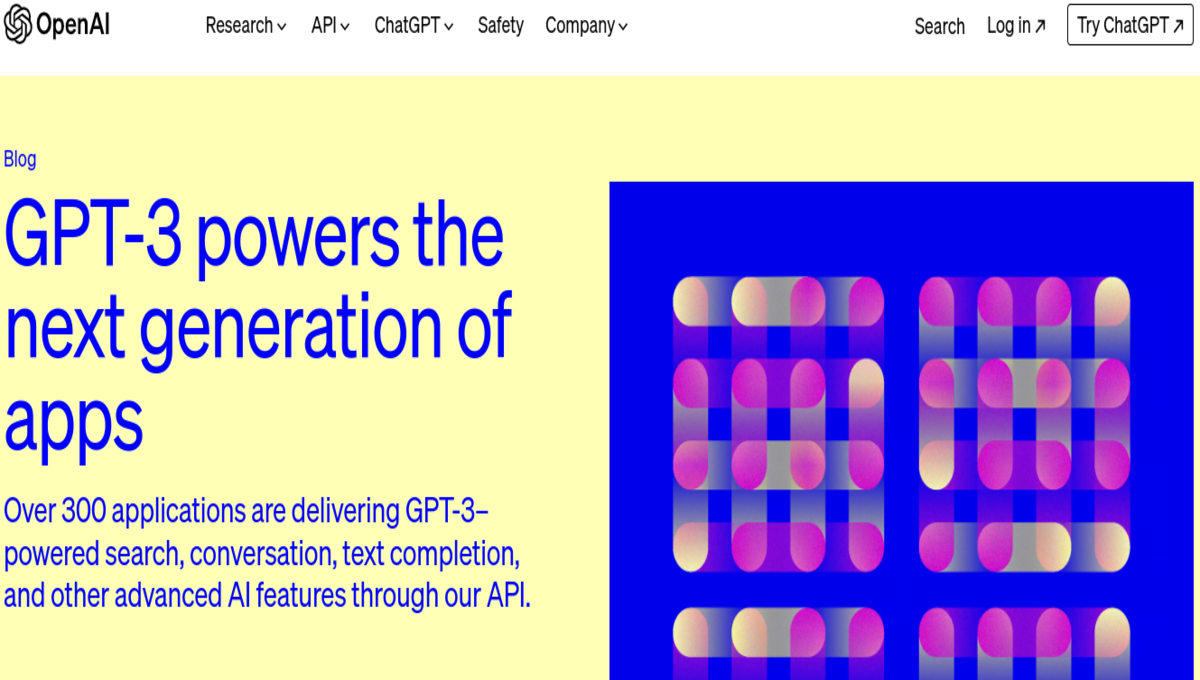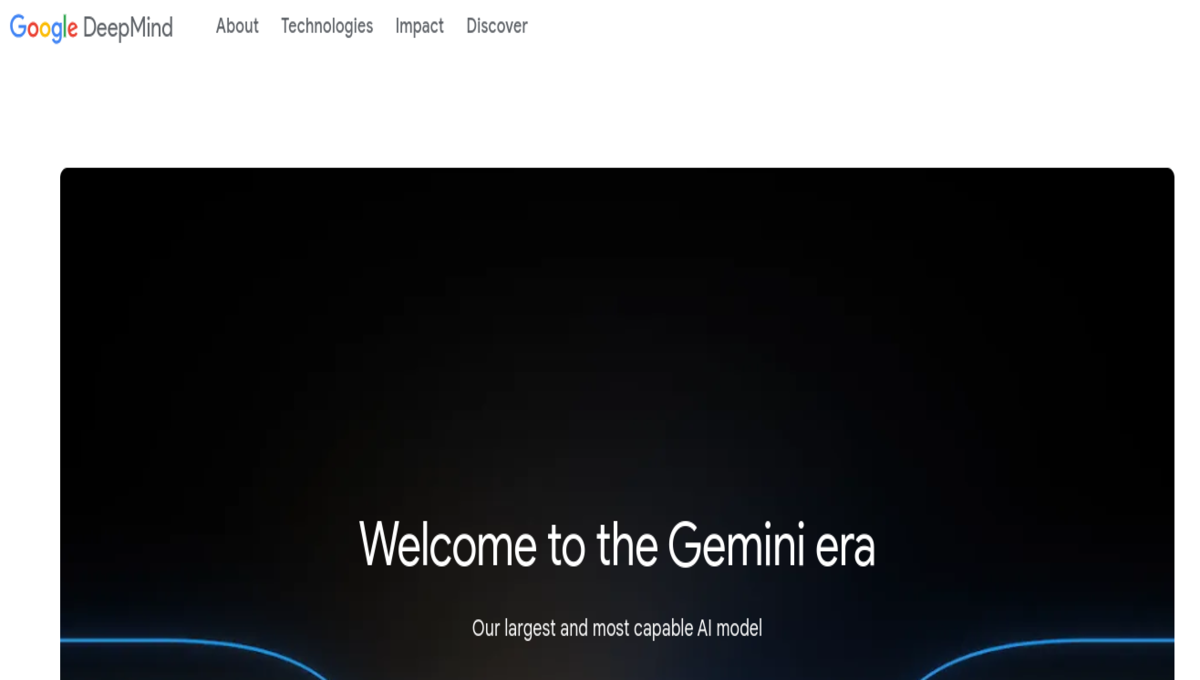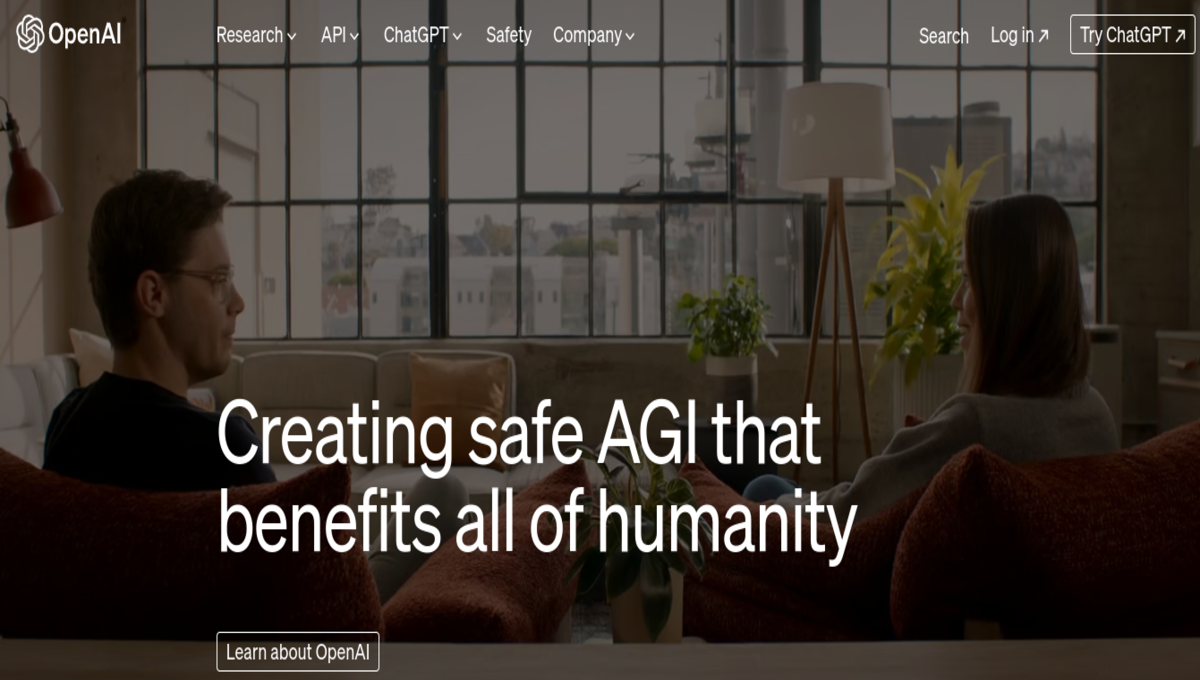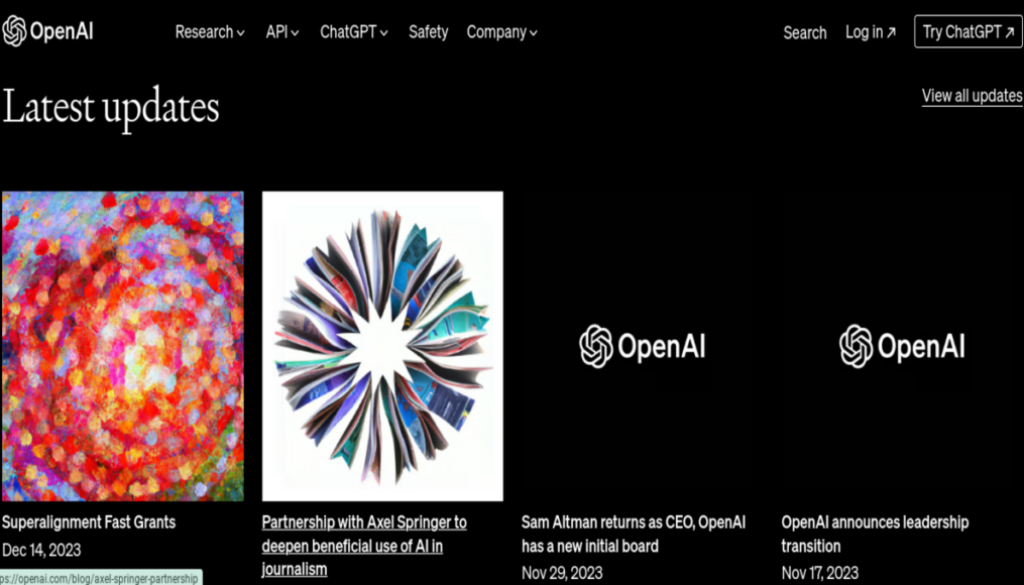Top 3 Generative AI Companies: Revolutionizing the Future of Technology
In the fast-paced realm of technology, one innovation stands out—Generative Artificial Intelligence (AI). This groundbreaking technology, driven by companies at the forefront of innovation, is reshaping industries and redefining the boundaries of what is possible. The advent of Generative AI Companies has marked a paradigm shift in the way machines comprehend and generate information. This section deals with the origins and the meteoric rise of this transformative technology.
Pioneering Generative Companies
In artificial intelligence, certain technologies have emerged as trailblazers, reshaping how machines understand and generate information. This section delves into the pioneering technologies that have propelled Generative Artificial Intelligence (AI) to the forefront of technological innovation.
Gpt-3 Generative AI Companies
At the forefront of Generative AI Companies GPT-3, or Generative Pre-trained Transformer 3, developed by OpenAI. GPT-3 represents a paradigm shift in natural language processing. With a staggering 175 billion parameters, it boasts an unprecedented scale, enabling it to comprehend context, generate coherent responses, and perform an array of language-related tasks. GPT-3’s versatility, demonstrated through its ability to perform diverse functions with minimal examples or instructions, has elevated it to a revolutionary status in the field.

Nowadays few advancements have captured the imagination and potential of developers and businesses quite like OpenAI’s GPT-3 (Generative Pre-trained Transformer 3). This section delves into the intricacies of this cutting-edge technology, exploring its capabilities and the transformative impact it has had on the field.
Understanding GPT-3
GPT-3 represents the third iteration of OpenAI’s highly successful series of language models. Built upon the transformer architecture, GPT-3 is notable for its sheer scale, boasting a staggering 175 billion parameters. To put this into perspective, it’s over 100 times larger than its predecessor, GPT-2. This scale contributes to GPT-3’s ability to comprehend context, generate coherent and contextually relevant responses, and perform various language-related tasks.
Unprecedented Language Comprehension
GPT-3 exhibits a remarkable understanding of context, allowing it to generate human-like responses to diverse prompts. Its language comprehension goes beyond mere pattern recognition, enabling it to grasp the nuance and subtleties of human communication.
Multifunctional Capabilities
One of the standout features of GPT-3 is its versatility. Unlike previous models that were often specialized for specific tasks, GPT-3 showcases a “few-shot learning” ability. This means it can perform various tasks with minimal examples or instructions. From language translation to code generation, GPT-3 is a versatile tool that adapts to diverse applications.
Creative Content Generation
GPT-3 has gained acclaim for its ability to generate creative content, including essays, poems, and even fictional narratives. The model can emulate different writing styles and adapt its output based on the desired tone or genre, making it a powerful tool for content creators.
Natural Language Interface
The natural language interface provided by GPT-3 simplifies interactions between humans and machines. Developers can create applications where users communicate with the system in natural language, eliminating the need for complex programming languages or interfaces.
Potential and Limitations
While GPT-3 showcases immense potential, it is not without its limitations. The model may produce outputs that seem coherent but lack factual accuracy. Addressing these limitations remains an ongoing area of research within the generative AI Companies.
Applications Beyond Imagination
The impact of GPT-3 extends far beyond theoretical discussions, finding practical applications across various domains.
Content Creation and Marketing: GPT-3 has revolutionized content creation, helping marketers generate engaging copy, brainstorm creative ideas, and even draft compelling emails. Its ability to understand and replicate various writing styles streamlines the creative process.
Programming Assistance: Developers have leveraged GPT-3 for programming-related tasks. From generating code snippets to providing solutions for coding challenges, GPT-3 acts as a powerful programming assistant, accelerating software development processes.
Conversational Agents: The natural language understanding of GPT-3 has been harnessed to create sophisticated chatbots and virtual assistants. These agents can engage in meaningful conversations, understand user queries, and provide relevant information or assistance.
Language Translation: GPT-3’s multilingual capabilities make it adept at language translation. Its ability to contextualize and understand the nuances of different languages contributes to more accurate and contextually appropriate translations.
Educational Support: GPT-3 can generate educational content, assist in creating interactive learning materials, and even provide personalized tutoring experiences.
Challenges and Future Development
Despite its groundbreaking capabilities, GPT-3 is not without challenges. Addressing ethical concerns, refining accuracy, and ensuring responsible usage are imperative for the responsible deployment of this technology. Future iterations and research endeavors aim to overcome these challenges, pushing the boundaries of what is achievable with generative language models.
The journey of GPT-3 exemplifies the rapid evolution of Generative AI, setting new benchmarks and expanding the possibilities of what AI can achieve in natural language processing. As we explore the capabilities of this game-changing model, it becomes clear that the future holds even more exciting developments in the ever-evolving field of artificial intelligence.
DeepMind’s Contributions – Generative AI Companies
DeepMind, a leader in AI research, has contributed significantly to the field of generative AI. Their creation, AlphaGo, marked a historic moment by defeating the world champion Generative AI Companies in the complex game of Go. Building on this success, DeepMind introduced AlphaZero, showcasing the ability to generalize learning across games. Additionally, their work on AlphaFold demonstrated breakthroughs in predicting protein structures, with profound implications for understanding diseases.

Delve into the significant contributions made by DeepMind, a leader in AI research, and understand how their innovations have pushed the boundaries of what AI can achieve.DeepMind stands out as a trailblazer, consistently pushing the boundaries of what AI can achieve. This section explores the significant contributions made by DeepMind, shedding light on the transformative impact their innovations have had on the field.
The Genesis of DeepMind
Founded in 2010, DeepMind quickly garnered attention for its ambitious mission: to “solve intelligence and then use that to solve everything else.” Acquired by Google in 2014, DeepMind retained its independent identity, focusing on cutting-edge AI research and development.
AlphaGo: Mastering the Game of Go
One of DeepMind’s groundbreaking achievements was the development of AlphaGo, an AI program designed to play the ancient and highly complex game of Go. In 2016, AlphaGo made headlines by defeating the world champion, Lee Sedol, marking a historic moment in AI and showcasing the potential of deep neural networks in mastering intricate strategic games.
AlphaZero: Generalized Learning Mastery
Building on the success of AlphaGo, DeepMind introduced AlphaZero, a more generalized AI system. AlphaZero demonstrated the ability to excel not only in Go but also in chess and shogi, achieving superhuman performance through self-play reinforcement learning. This approach showcased DeepMind’s commitment to creating adaptable and versatile AI systems.
Protein Folding Breakthrough with AlphaFold
DeepMind’s foray into biology yielded another monumental achievement with AlphaFold. In the Critical Assessment of Structure Prediction (CASP) competition, AlphaFold demonstrated remarkable accuracy in predicting protein structures—a complex challenge in bioinformatics. This breakthrough has profound implications for understanding diseases and developing new treatments.
AI for Healthcare Advancements
DeepMind has actively pursued applications of AI in healthcare. Their collaborations with healthcare professionals have led to the development of AI models for diagnosing eye diseases and predicting patient deterioration. These initiatives showcase DeepMind’s commitment to leveraging AI for societal benefit.
Ethics and Transparency Initiatives
In addition to technological advancements, DeepMind has been at the forefront of addressing ethical considerations in AI. The company established an Ethics & Society unit, emphasizing transparency, fairness, and accountability in AI development. DeepMind’s commitment to ethical AI practices sets a commendable standard for the industry.
Impact Beyond the Lab: DeepMind’s contributions extend far beyond the confines of research laboratories. Their advancements have not only influenced the development of AI systems but have also inspired collaborative efforts and conversations within the global scientific community.
Inspiring Collaborations: DeepMind’s success stories have sparked collaborations with researchers, scientists, and institutions worldwide. The exchange of ideas and knowledge-sharing facilitated by DeepMind’s achievements contributes to the collective progress of AI research.
Shaping Industry Standards: As a pioneer in AI research, DeepMind’s work sets industry standards. Their commitment to ethical considerations and transparency influences the broader AI community, encouraging responsible development practices and fostering a culture of openness.
Educational Outreach: DeepMind actively engages in educational outreach, contributing to the dissemination of knowledge in Generative AI Companies. Through publications, conferences, and educational partnerships, the company plays a role in shaping the next generation of AI researchers and practitioners.
Challenges and Future Aspirations
While celebrating DeepMind’s contributions, it’s essential to acknowledge the challenges that lie ahead. Ethical considerations, responsible AI deployment, and addressing potential biases are ongoing focal points for DeepMind and the wider AI community.DeepMind’s journey exemplifies the transformative potential of AI when driven by a commitment to innovation, ethical considerations, and a vision of using intelligence to address diverse challenges across various domains.
The legacy of DeepMind’s contributions underscores the profound impact that innovative AI research can have on our understanding of intelligence and its applications in diverse fields. As we navigate the future of artificial intelligence, DeepMind’s pioneering work continues to be a guiding light, inspiring researchers and shaping the trajectory of AI development.
OpenAI’s Innovations – Generative AI Companies
OpenAI, with its commitment to advancing AI for the benefit of humanity, has been instrumental in pushing the boundaries of generative AI. The GPT series, starting from GPT-1 to the colossal GPT-3, exemplifies the power of pre-trained transformer models. OpenAI’s emphasis on collaboration and open-source principles has fostered a community-driven approach to AI development, accelerating progress and knowledge dissemination.

OpenAI, a trailblazer in AI research, has consistently delivered cutting-edge solutions. This section explores OpenAI’s contributions, showcasing their impact on the evolution of Generative AIOpenAI has emerged as a powerhouse of innovation, consistently pushing the boundaries of what’s possible. This section explores the significant contributions made by OpenAI, shedding light on their pioneering work and transformative impact on the field.
Founding Principles of OpenAI: Established in 2015 with a mission to ensure that artificial general intelligence (AGI) benefits all of humanity, OpenAI operates on principles emphasizing safety, broadly distributed benefits, long-term safety, technical leadership, and cooperative orientation. These principles guide OpenAI’s research and development initiatives.
GPT (Generative Pre-trained Transformer) Series: OpenAI’s GPT series has been a revolutionary force in natural language processing. Starting with GPT-1 and evolving to the immensely powerful GPT-3, these models showcase the capabilities of large-scale unsupervised learning. GPT-3, with its 175 billion parameters, has demonstrated unprecedented language understanding and generation capabilities.
Reinforcement Learning and Robotics: OpenAI has delved into reinforcement learning for training AI agents to perform complex tasks. Notably, their work on robotic systems, such as Dactyl, showcases advancements in dexterous hand manipulation. These developments bring Generative AI Companies closer to seamlessly interacting with and manipulating the physical world.
Dota 2 and Competitive Gaming: In a groundbreaking move, OpenAI’s AI system defeated professional human players in the complex multiplayer game Dota 2. The success of OpenAI Five demonstrated the adaptability of AI in complex, real-time environments, marking a significant milestone in competitive gaming.
Contributions to AI Ethics and Safety: OpenAI actively engages in research and initiatives focused on the ethical and safe development of Generative AI Companies. Their commitment to avoiding enabling the use of AI or the concentration of power that could harm humanity reflects a conscientious approach to the societal implications of their innovations.
Collaboration and Open Source: OpenAI embraces collaboration and open-source principles. By sharing research findings and collaborating with the global AI community, OpenAI accelerates the collective progress of AI research. This openness extends to the codebases of some of their key projects, fostering transparency and knowledge exchange.
Language Translation and Understanding: GPT models from OpenAI have demonstrated remarkable capabilities in language translation and understanding. The potential for these models to facilitate cross-language communication and comprehension has implications for global connectivity.
Content Generation and Creativity: OpenAI’s models have been harnessed for content generation, from creative writing to code autocompletion. The ability of AI to augment human creativity underscores the potential for these technologies in diverse creative industries.
AI in Education: OpenAI’s work has implications for education, with the potential to assist in personalized learning, automate administrative tasks, and provide tools for educators. The adaptability of GPT models makes them valuable resources in educational contexts.
Challenges and Future Trajectory: As OpenAI continues its journey, addressing challenges and shaping the future of AI, certain considerations come to the forefront.
Ethical Considerations and Bias Mitigation: OpenAI acknowledges the ethical responsibilities that come with AI development. Ongoing efforts to mitigate biases and ensure fairness in AI models reflect a commitment to responsible AI deployment.
Expanding Access to AI Benefits: OpenAI’s mission emphasizes the broad distribution of benefits from AI. Future initiatives will likely focus on ensuring that the positive impacts of AI reach diverse communities and address societal challenges.
Continued Technical Leadership: Maintaining technical leadership is a cornerstone of OpenAI’s principles. The pursuit of cutting-edge research and staying at the forefront of AI capabilities remains central to their mission.
Reinforcement Learning – Dactyl and Beyond: OpenAI’s foray into reinforcement learning, demonstrated through projects like Dactyl, showcases advancements in training AI agents for physical tasks. Dactyl’s mastery of dexterous hand manipulation highlights the potential for AI to interact with the physical world, opening doors to applications in robotics, automation, and beyond.
Conclusion
As we stand at the forefront of the generative AI revolution, it becomes evident that these technologies are not mere tools; they represent a paradigm shift in how machines comprehend, generate, and interact with information. The versatility of GPT-3, the strategic prowess of AlphaGo, and the breakthroughs in protein folding with AlphaFold—all exemplify the breadth and depth of generative AI applications.



